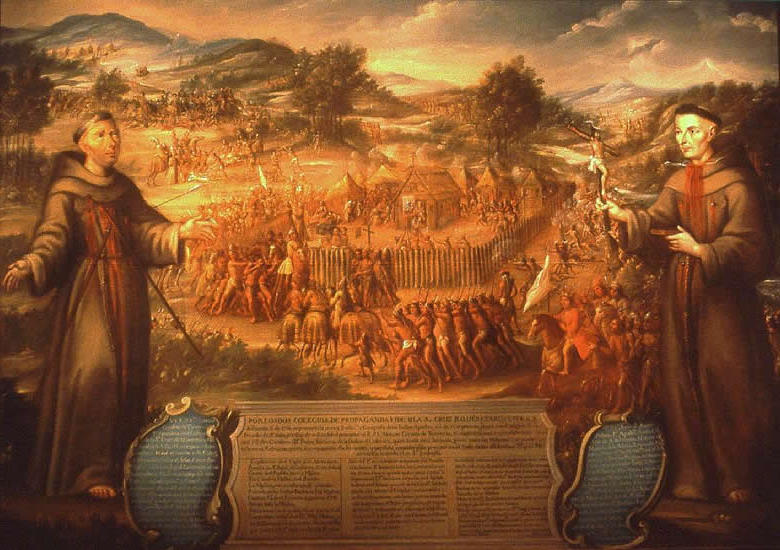#2 Postby Ed Mahmoud » Fri May 08, 2009 11:40 pm
TERREROS, ALONSO GIRALDO DE (1699-1758). Alonso Giraldo de Terreros, founder and president of Santa Cruz de San Sabá Mission,qv was born in Cortegana, Huelva, Spain, on June 19, 1699, the son of Pedro de González Giraldo and Isabel de Castilla Terreros y Ochoa. He was baptized in Cortegana’s parish Church of San Salvador. While he was still a child, his parents took him to Mexico. He took the Franciscan habit at the College of Santa Cruz de Querétaro on July 14, 1721. Terreros served for a time in the East Texas mission field. On July 20, 1729, he joined with other priests of that region in a written protest of the inspector Pedro de Rivera’s recommendation to suppress Nuestra Señora de los Dolores de los Tejas Presidio. As minister of San Bernardo Mission on the Rio Grande in the early 1730s, he again confronted Rivera’s reforms; he journeyed to Mexico City to protest restrictions placed on the services that soldiers could provide for the missions. In 1745 Terreros became guardian of the college at Querétaro, serving during the early stages of an accelerated mission expansion. When his term ended in 1748, he returned to San Juan Bautista as president of the Rio Grande missions. A period of uncertainty marked Terreros’s tenure as mission president. The founding of the San Xavier Missions in Texas brought forth a plan from the missionary college to secularize the Rio Grande missions and apply their assets to the new endeavor. As difficulties surrounded the San Xavier enterprise, however, the plan changed, and the Rio Grande missions were spared. An order came for Terreros to replace the abrasive Fray Mariano de los Dolores y Viana as president of the San Antonio and San Xavier missions. As the trouble at San Xavier became irreconcilable, the order was reversed. In the meantime Terreros had come in contact with the Natagés of the Eastern Apaches at San Juan Bautista and sought to convert them. Failure by missionaries at San Antonio to win support for an Apache mission galvanized action in Coahuila. Late in 1754 Terreros took charge of a new mission, San Ildefonso, near what is now Zaragoza, Coahuila, where fifty-two Apaches from the Texas side of the Rio Grande soon gathered. The neophytes rebelled in October 1755, while Terreros was absent seeking support for the enterprise. They sacked and burned the mission, which was never reestablished.
Terreros, having sacrificed much for the Apache conversion, confronted a problem. The impasse found its solution in April 1756, when he learned that a kinsman wished to support him in a new undertaking. Pedro Romero de Terreros, his cousin, was a wealthy mineowner in Pachuca. He offered to finance up to twenty missionaries to seek conversion of the Eastern Apaches, on condition that Fray Terreros head the enterprise. The plan coincided with another for Apache conversions that had evolved in San Antonio. The San Saba River valley, near what is now Menard, had been chosen as the most suitable location. Ultimately the two plans were combined. Terreros and five other friars of the missionary colleges of Querétaro and San Fernando de Mexico, with soldiers for the adjacent presidio and various support personnel, arrived at the site on April 17, 1757. Instead of winning the Apaches, the effort brought the wrath of the Apaches’ enemies down on the nascent mission Santa Cruz de San Sabá. In an attack by Comanches, Wichitas, and their allies on March 16, 1758, Fray Terreros, Fray José de Santiesteban Aberín, and at least six other people were slain. In 1941 the Catholic bishops of the United States proposed fathers Terreros and Santiesteban for beatification. The matter was still pending in 1994. In 1958 the Superior Council of Missions in Spain presented a plaque to the Church of San Salvador in Cortegana, where Terreros was baptized. Mounted on an outside wall, it was unveiled in 1959 on the anniversary of his birth.
0 likes
